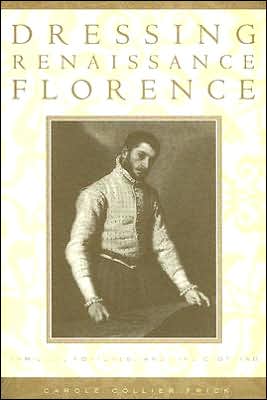

 |

|

The average rating for Dressing Renaissance Florence: Families, Fortunes, and Fine Clothing based on 2 reviews is 3.5 stars.
Review # 1 was written on 2016-06-30 00:00:00 Michele Christopher Michele ChristopherThorough, diligent, scholarly, and full of closely researched detail. This is a book that's narrow and deep, it's focused on clothes, and how we can use the lens of clothes to appreciate the families of the Florentine Renaissance. This isn't an especially fun read, or very interesting except as research reading, but as research reading it's amazingly useful on all kinds of things, from the social status of a tailor, details of women's lives, and the way grand-daughters might get married in the family colours of their grandmother. The information on sumptuary legislation and the way it was dealt with by constantly changing the fashion slightly "no, this isn't the forbidden kind of edging, the law says nothing about this kind, it was just invented!" makes so much more sense of Savonarola's actions against "vanities". There's also an invaluable table of annual pay for different people, which would be worth the price of the book alone. And I very much liked the visual examples from art, and the discussion of why certain things were visible and invisible in art. |
Review # 2 was written on 2015-09-13 00:00:00 Michael Schwaab Michael SchwaabLike it says. Though it's interesting, since you have to piece it together. No complete garments survive. Textiles were a major industry for Florence, but sumptatory laws meant that they deliberately curbed it. One tried to show off by the expensiveness of the dye used and the finest of the cloth. The importance of trousseaus -- and the counter-trousseau that the bridegroom gave, not to to embarrassed by all the wealth on the bride's side. Convent who took in young girls and taught them to sew and embroider as well as read and write -- and let them go in processions on the feast day of the convent's saint, giving them a chance to marry. (One convent donated the bride's white gown because her husband was poor.) What professions worked at what. How tailors' prices were set by law -- the only trade so treated. The terms for dyes, not all of which have been identified as a color. And more. Can be a bit dry in places. |
CAN'T FIND WHAT YOU'RE LOOKING FOR? CLICK HERE!!!